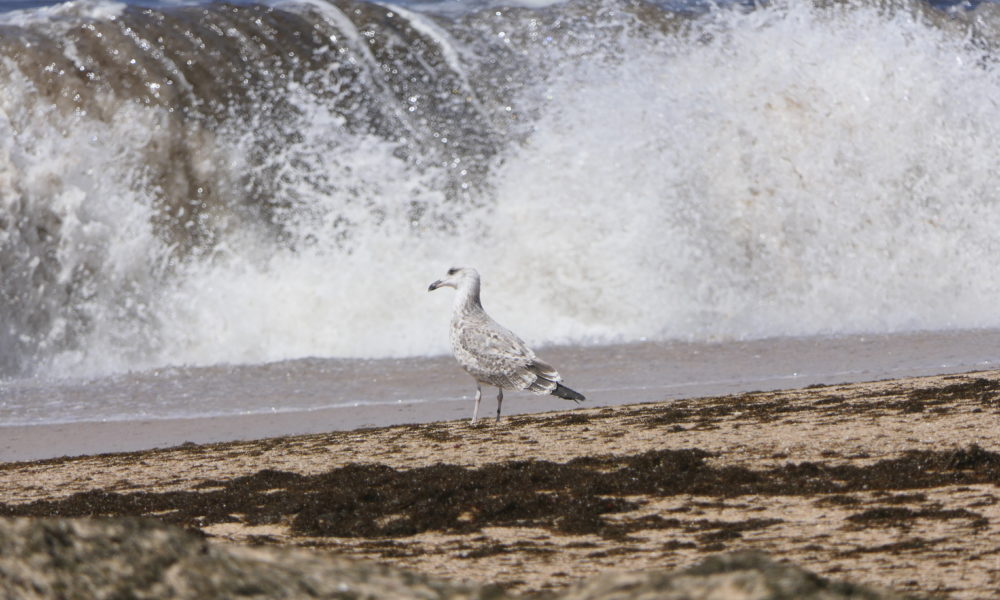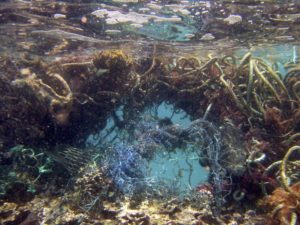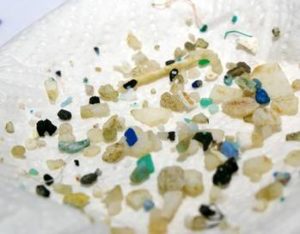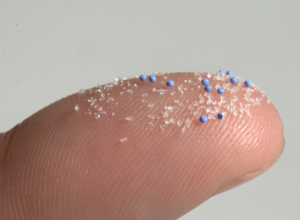
Winning the Fight Against Plastic Pollution

Photograph by Ray Boland, NOAA. File licensed under the Creative Commons Attribution 2.0 Generic license
Plastic waste has become a scourge of the Earth, polluting waterways and creating garbage patches in the oceans, the largest of which is in the Pacific Ocean. According to National Geographic: “While many different types of trash enter the ocean, plastics make up the majority of marine debris for two reasons. First, plastic’s durability, low cost, and malleability mean that it’s being used in more and more consumer and industrial products. Second, plastic goods do not biodegrade, but instead break down into smaller pieces.” Thus, most of the plastic in the oceans is invisible to the naked eye. While the garbage patches get the most attention, the plastics that we cannot see are also a grave concern.
Animals bear the brunt of the problem
Many animals feed on these pieces of plastic or wind up tangled in them. Turtles mistake them for jellyfish; birds mistake small bits of plastic for fish eggs. Seals, dolphins and whales roll up in discarded fishing nets and can’t escape or ingest such huge amounts of indigestible plastic, so it kills them. Land-based animals don’t fare any better than their sea-based counterparts. Many plastics look like food and scavengers will eat them. Researchers from the Leibniz-Institute of Freshwater Ecology and Inland Fisheries (IGB) and Freie Universität Berlin say that: “In fact, terrestrial microplastic pollution is much higher than marine microplastic pollution – an estimate of four to 23 times more, depending on the environment.” The plastics ingested both on land and in the water also move up the food chain as larger animals eat the smaller ones – eventually reaching humans.
Few take responsibility

Source: Giora Proskurowski, Sea Education Association (SEA)
And of course, because things like garbage patches are located far from any country’s shores, no single country will take responsibility for them even if the plastic comes directly from their own waterways. Thus, it is up to individuals and organizations to both help clean up and ensure that no more plastic finds a home in our ecosystems, be they land- or water-based – a taller than tall order.
The National Ocean and Atmospheric Administration’s (NOAA) Marine Debris Program in the United States estimates that it would take 67 ships one year to clean up less than 1% of the North Pacific Ocean alone.
Don’t give up the fight!
You can do many things to lower your use and disposal of plastics, especially of the non-recyclable variety, and to support organizations battling this scourge. Every little bit helps.
Eliminate single-use plastics from your daily life
-
-

Source: JPI Oceans
-
- Take your own reusable bottle with you when you are out and about, instead of buying water in plastic bottles;
- Bring your own mesh bags to the grocery store and use them for fresh produce rather than the plastic bags provided by stores;
- Avoid produce and other items wrapped or bagged in plastic;
- Buy in bulk and bring your own containers or ask for paper bags;
- Bring your own reusable grocery bags to the grocery store, a requirement in more and more locations as governments and businesses phase out providing bags to customers;
- Switch from plastic-based q-tips to ones made of paper, cardboard or silicon;
- Put your cigarette butt in a portable ash tray or trash can rather than dropping it on the ground or in a sewer grate or, better yet, give up smoking altogether;
- Choose cardboard over plastic containers (bottles and bags);
- Say no to straws or if you must have one, bring your own stainless-steel or bamboo straw;
- At home, replace plastic wrap with silicon lids for bowls that don’t have one; replace plastic baggies with silicon baggies; or better yet, use jars or glass containers;
- Replace bubble wrap with paper you plan to take for recycling.
Clean up your own environment
- Walk around your neighbourhood or the woods near your house and pick up plastic and other debris, especially after storms when they are easier to spot;
- If you live near a river, stream, canal or other waterway, wade in and pick up any trash you see;
- If you live near a pond, lake or sea, take any opportunities you have to go out onto or into the water to remove what others have left behind; doing this on a paddleboard, kayak or small boat, if you have access to one, is excellent exercise and provides an easy way to pick things up and transport them back to shore;
- Find and participate in a clean-up day near you in one of the many villages, towns, cities and collectives that organize them.
Donate to or volunteer with organizations that work on the plastic pollution problem
- 4Ocean, which is targeting plastic pollution in Asia, the US and the Caribbean so far (see our previous story on 4Ocean)
- 5 Gyres, whose mission is to empower action against the global health crisis of plastic pollution through science, education and adventure
- Algalita Marine Research Foundation, which has been at the forefront of the Great Plastics Awakening since 1999
- Bye Bye Plastic Bags, a youth collective in Bali to develop programming for local kids to learn about pollution, participate in beach cleanups, and take a stand against public policies that are detrimental to oceans
- Nature Conservancy, a conservation organization fighting to protect both nature and people through direct action, such as volunteering for a beach cleanup, or education, such as spreading information on the benefits of a clean ocean
- NOAA’s Marine Debris Program
- Ocean Conservancy, which hosts the International Coastal Cleanup, bringing together millions of volunteers to remove trash from beaches around the world
- Ocean Cleanup, the largest cleanup in history (see our 2016 story about the Ocean Cleanup)
- Oceana, an international ocean conservation organization that works to protect and restore the world’s oceans through targeted policy campaigns
- Parley for the Oceans, which brings artists, musicians, designers, writers together to change the way we use plastic; its A.I.R. Strategy faces plastic pollution head on: avoid plastic wherever possible, intercept plastic waste and redesign the plastic economy
- Plastic Oceans Foundation, “a non-profit organization raising awareness about plastic pollution to inspire behavioural change”
- Plastic Pollution Coalition, “a growing global alliance of more than 1,000 organizations, businesses, and thought leaders in 60 countries working toward a world free of plastic pollution and its toxic impact on humans, animals, waterways, the ocean, and the environment”
- Seabin project, an in-water automated marina rubbish collector (see our 2016 story about the Seabin project)
- Take 3, an initiative to encourage people to leave the world’s beaches and oceans cleaner than when they found them
(Lists not exhaustive.)

